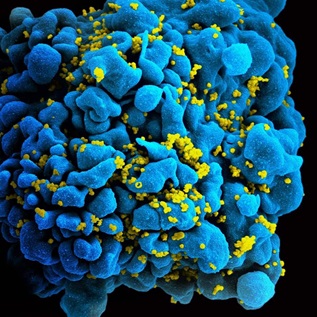When It Comes to Healthy Snacks, Many Schools Do Not Make the Grade
WASHINGTON — The majority of our nation's secondary schools do not sell fruits and vegetables in school stores, snack bars, or vending machines, according to a new report by the Kids' Safe and Healthful Foods Project, a joint initiative of The Pew Charitable Trusts and the Robert Wood Johnson Foundation.
“Research shows that the consumption of 110 to 165 calories above recommended amounts per day—roughly the difference between an apple and a bag of chips—may be responsible for rising rates of childhood obesity,” said Jessica Donze Black, director of the Kids' Safe and Healthful Foods Project. “Because many students consume as many as half of their daily calories at school, what children eat during the school day is a critical issue if we want to reverse obesity rates.”
The study, Out of Balance: A Look at Snack Foods in Secondary Schools across the States, reveals the tremendous state-to-state variability in the types of snack foods and beverages available in secondary schools.
Key findings show:
-
Many states reduced the availability of low-nutrient, high-calorie snacks such as chocolate, other candy, or full-fat salty chips in secondary schools between 2002 and 2008, but progress has since stalled.
-
Hundreds of secondary schools sell less-healthy snack foods or beverages. In 36 states, more than a quarter of schools sold them in 2010.
-
The availability of healthy snacks, such as fruits and vegetables, in secondary schools is limited. In 49 states, fewer than half of secondary schools sold fruits and vegetables in snack venues in 2010.
|
Click the image to view infographic. |
The findings come as the U.S. Department of Agriculture (USDA) prepares to issue policies requiring that foods and beverages sold outside of the federal school meals program meet minimum nutrition standards. These items, which are sold in vending machines, school stores, and cafeteria a la carte lines, often are called “competitive foods” because they compete with school meals for students' spending. Earlier this year, meals served in most public schools became healthier due to nutritional guidelines drafted by USDA to implement the Healthy, Hunger-Free Kids Act of 2010. But those regulations did not cover snack foods and beverages.
The new report reinforces a study published in Pediatrics in August showing that strong, consistent state laws appear to have an impact on students' weight. The study found that children and teens in states with strong laws restricting the sale of unhealthy snack foods and beverages in school gained less weight over a three-year period than those living in states with no such policies.
For this latest report, the project reviewed data on the types of snack foods and beverages sold in secondary schools via vending machines, school stores, and snack bars. The data were extracted from the School Health Profiles 2010: Characteristics of Health Programs among Secondary Schools in Select U.S. Sites, a biennial assessment from the Centers for Disease Control and Prevention (CDC) that uses surveys of principals and health education teachers to measure policies and practices across the nation. The CDC assessment does not include data on items sold in a la carte lines.
In light of these findings and the results of the Kids' Safe and Healthful Food Project's health impact assessment, the project recommends that USDA:
-
establish nutrition standards for all snack foods and beverages sold in school but outside of the school meals program; and
-
adopt policies and practices that ensure effective implementation of the standards
“The evidence is clear – schools can do this. Many states have made progress towards making healthier snacks available to students, but more must be done,” said Donze Black. “We urge USDA to adopt strong standards and help to put them into practice. All kids, no matter what school they attend, should have healthy snack choices at school.”












